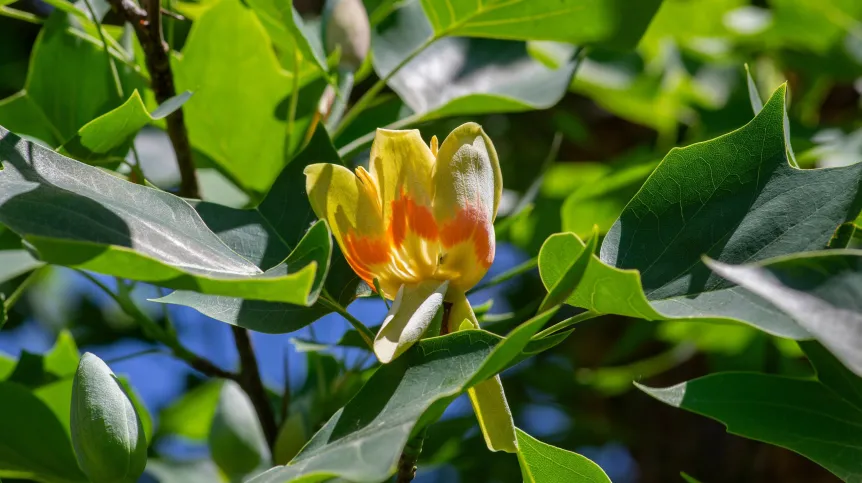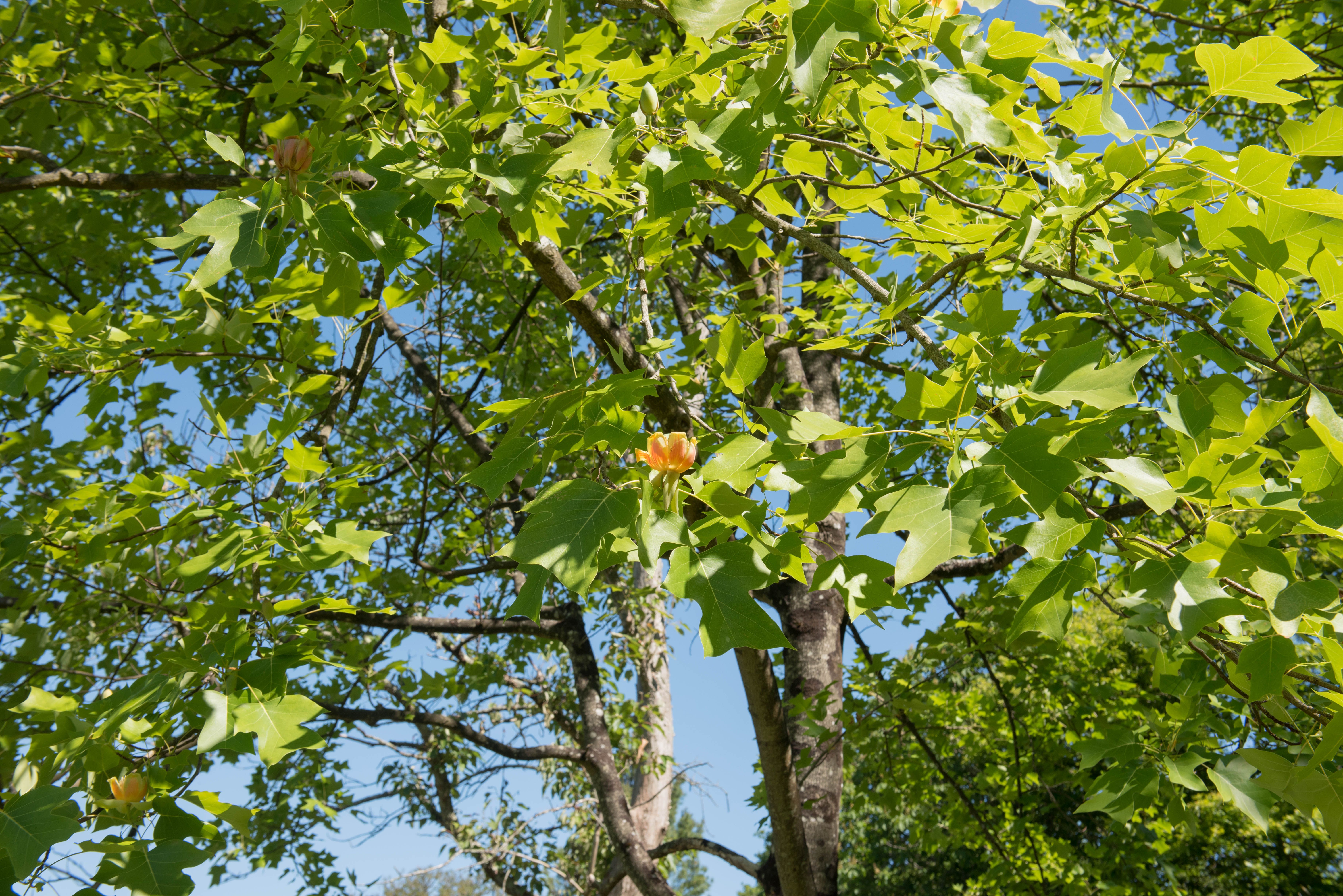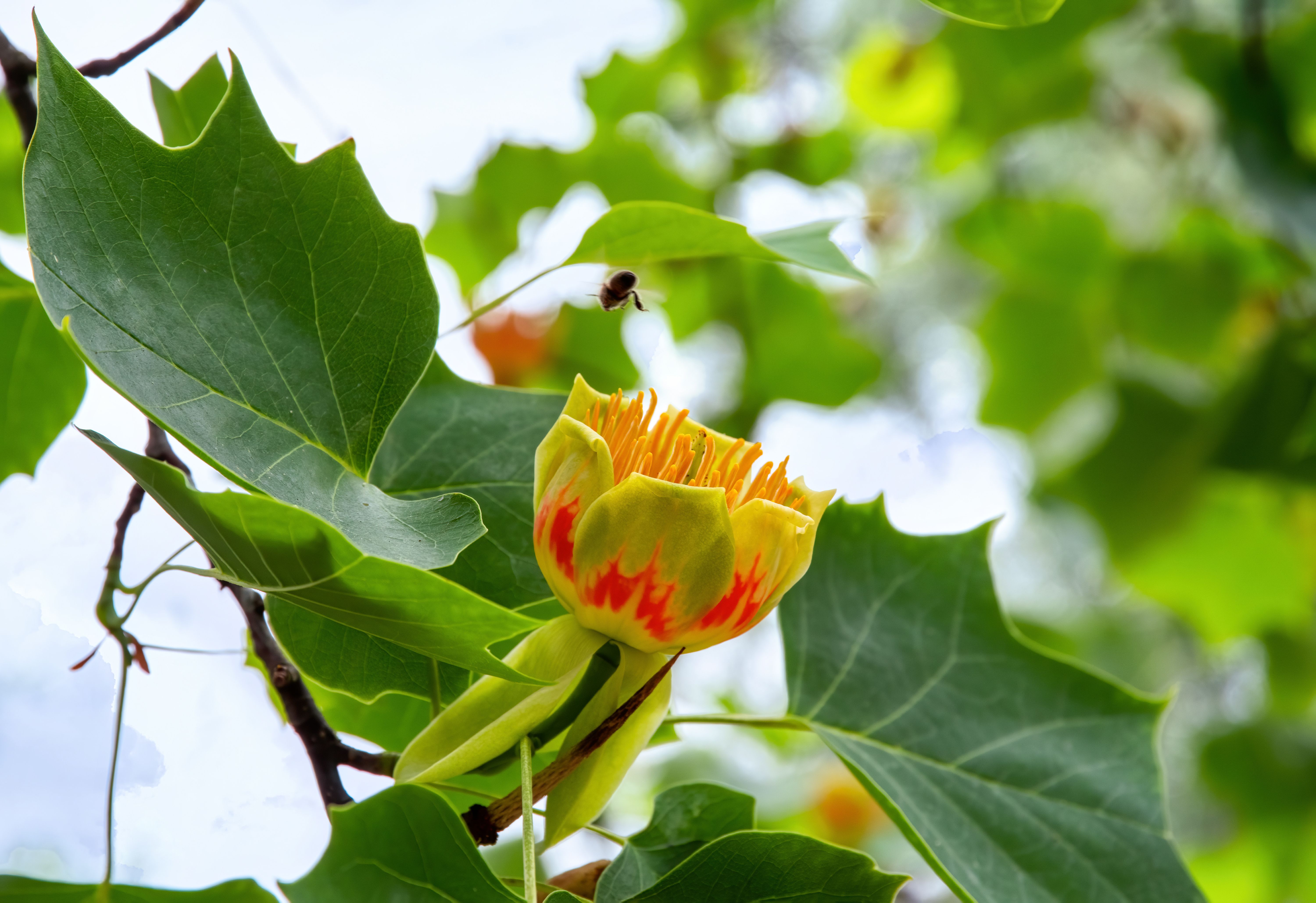
Tulip trees have a unique type of wood that does not fit into either category of hardwood or softwood, according to an analysis of tree evolution conducted by scientists from the Jagiellonian University and Cambridge University. The results of the research were published in the journal New Phytologist.
The Jagiellonian University press office reports that the research on tree evolution was carried out by Dr. Jan Łyczakowski from the Department of Plant Biotechnology of the Faculty of Biochemistry, Biophysics and Biotechnology of the Jagiellonian University and Dr. Raymond Wightman from the Sainsbury Laboratory Cambridge University.
Tulip trees naturally occur in North America (species Liriodendron tulipifera) and in China and Vietnam (species Liriodendron chinense). These trees are tall, some over 60 m in height, and have a single, straight, late-branching trunk. Their beautiful autumn colour is the reason they are often planted in gardens, also in Poland.

Scientists from Poland and the UK used a low temperature scanning electron microscope (cryo-SEM) to image the nanoscale architecture of secondary cell walls that form wood. The researchers analysed the wood of 33 different species of trees and shrubs, taking into account species important for understanding plant evolution, such as Amborella trichopoda, selected gnetophyte species, and the aforementioned tulip trees. The main goal of the research was to learn about the structure of macrofibrils - fibrous structures with a diameter of 10-40 nm that make up wood. To measure them, they had to look at the wood in the tested samples with a magnification exceeding 50 thousand times.
According to the first author Dr. Jan Łyczakowski, the study shows that Liriodendron tulipifera and Liriodendron chinense have an intermediate macrofibril structure that is significantly different from the structure of either softwood or hardwood.

'Liriodendrons diverged from magnolia trees around 30–50 million years ago, which coincided with a rapid reduction in atmospheric CO2. This might help explain why tulip trees are highly effective at carbon storage’, Dr. Łyczakowski says.
According to the researchers, both tulip tree species are known to be exceptionally efficient at locking in carbon, and their enlarged macrofibril structure could be an adaptation to help them more readily capture and store larger quantities of carbon. 'We therefore believe that a better understanding of the ultrastructure of wood and its biochemical composition may be crucial to understanding what drives this and how much carbon dioxide can be stored in wood', they say.
The wood samples were collected from trees in the 'Living Collections' of the Cambridge University Botanic Garden in coordination with the Garden’s Collections Coordinator Margeaux Apple.
Fresh samples of wood deposited in the previous spring growing season were collected from a selection of trees to reflect the evolutionary history of gymnosperm and angiosperm populations as they diverged and evolved.
According to Dr Raymond Wightman, co-author of the study from Cambridge University and head of the microscopy department at the Sainsbury Laboratory, in addition to studying the tulip tree, the scientists have identified many interesting processes in the evolution of wood structure.
'We analysed some of the world's most iconic trees like the giant sequoia, Wollemi pine and so-called +living fossils+ such as Amborella trichopoda, which is the sole surviving species of a family of plants that was the earliest still existing group to evolve separately from all other flowering plants'. The researchers also discovered that gymnosperm plants in the Gnetophytes family - Gnetum gnemon and Gnetum edule - both have a secondary cell wall ultrastructure synonymous with the hardwood cell wall structures of angiosperms.
In his opinion, the research conducted together with the Jagiellonian University illustrates the continued value and impact that botanic gardens have in contributing to modern day research. 'This study would not be possible without having such a diverse selection of plants represented through evolutionary time, all growing together in the same place in the Cambridge University Botanic Garden’s Collections', Wightman adds.
Dr. Łyczakowski and Dr. Wightman analysed the samples at the Sainsbury Laboratory Cambridge University, where the researcher from the Jagiellonian University stayed as part of a fellowship funded by the SONATINA 3 programme of the National Science Centre. The research was financed by the National Science Centre and the Gatsby Charitable Foundation. (PAP)
PAP - Science in Poland
rgr/ agt/ kap/
tr. RL













